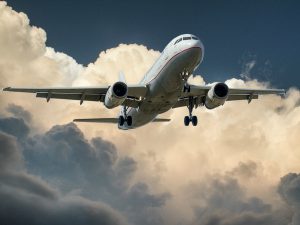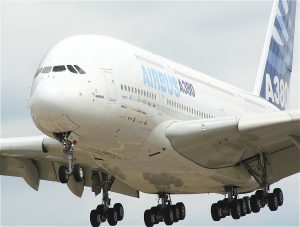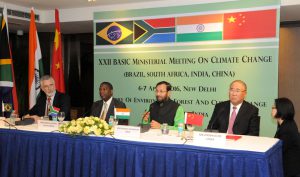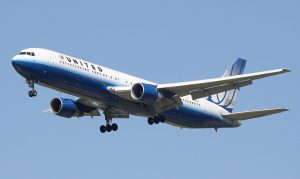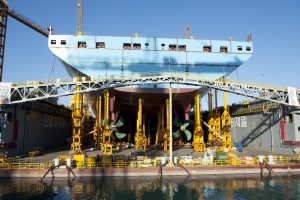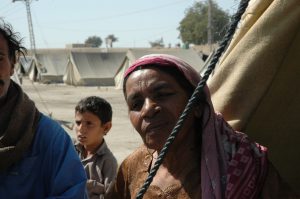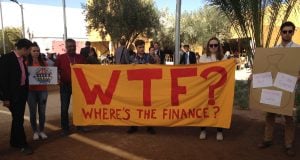Carbon emissions from aviation are growing faster than any other sector. In an effort to address the problem, the International Civil Aviation Organisation (ICAO) approved the world’s first global emissions reduction scheme last month.
The Carbon Offset and Reduction Scheme for International Aviation (CORSIA) is a market-based mechanism in which carbon emissions are offset through the purchase of credits, leaving aviation emissions to remain – at least on paper – at 2020 levels.
Aviation currently accounts for just 2% of total carbon dioxide emissions globally, about half of which is from international aviation. However, without effective measures, aviation could account for about 22% of all emissions by 2050, according to projections from Greenovation Hub, an environmental non-governmental organisation.
The aviation sector is growing rapidly, particularly in the Asia-Pacific region. The International Air Transport Association (IATA) predict that the number of airline passengers will more than double by 2034 to 7.3 billion, up from 3.5 billion in 2015. China will account for a significant proportion of the growth in passenger numbers. IATA expect that 20% of passengers will be travelling to, from or within China by 2034.
China is also predicted to overtake the US as the world’s largest aviation market for passengers by 2024. Passenger numbers are expected to double from current levels to over 900 million by 2025 and to 1.3 billion by 2035. The US market, in comparison, is expected to increase from just over 650 million passengers in 2015 to 900 million passengers.
To address this rapid growth, the CORSIA calls for international aviation to supplement efforts to reduce emissions from within the aviation sector with additional off-setting through a market-based mechanism. The CORSIA will begin with a trial from 2021 to 2023 and then a first stage from 2024 to 2026.
Both the trial and first stage will be voluntary, meaning airlines worldwide will have a decade to prepare for the start of the scheme in 2027. At this point countries will need to purchase emissions credits to keep sector emissions at the 2020 level. There will be some exceptions to the scheme: countries with minimal aviation traffic, least-developed nations, and island and landlocked developing nations will all be exempt.
Like shipping, the cross-border nature of international aviation has made finding agreement on limiting emissions especially challenging. The sector was not covered in the Paris Agreement so the CORSIA will be the key driver of emissions reduction. WWF China described the deal as “an important step for reduction of aviation emissions.”
As of October 12, 66 nations, including China, and together accounting for 86.5% of international aviation emissions, had signed up to the CORSIA trial. Russia and India have said they will not participate in the voluntary phases.
Limited headroom for cuts
The main challenge in curbing aviation emissions is that improvements in technology, operational efficiency and the development of sustainable alternative fuels will be unable to keep pace with passenger growth, meaning an increase in overall carbon emissions.
Andrew Murphy, aviation officer with Transport & Environment, a sustainable transportation body, told chinadialogue: “For the next few years, it’s expected that passenger demand will grow around 4-6% a year, while efficiencies will improve by about 1-2% a year.”
Even under ICAO’s most optimistic modelling scenario for technological and operational improvements, international aviation is expected to increase carbon dioxide (CO2) emissions by 523 million tonnes by 2040 or 1039 million tonnes by 2050, based on projected emissions in 2020.
The solution to this emissions gap is to utilise carbon off-setting so that passenger growth can continue unfettered whilst keeping aviation emissions at 2020 levels. This approach has been criticised by some EU law makers as lacking ambition because carbon trading under the CORSIA scheme will not lead to a reduction in emissions on 2020 levels.
There are also concerns about whether CORSIA will even incentivise airlines to change. Andrew Murphy is concerned that low carbon prices and overall costs won’t provide sufficient incentives for airlines to use better technology and optimise routes. ICAO calculations show that by 2035 airlines worldwide will be spending just 0.5% to 1.4% of their total costs on carbon abatement. This is less than the impact of fluctuations in the price of oil.
There are also concerns that the CORSIA will fail to maintain emissions at 2020 levels. Greenovation Hub and WWF claim that the CORSIA may see emissions traded with projects that actually do little to reduce carbon emissions or that have damaging environmental impacts. Ensuring that the aviation sector only purchases credits that guarantee real and long-term reductions in emissions will be challenging. It is also the case that projects selling carbon credits may have broader negative environmental impacts.
WWF China also point out that the CORSIA and the targets in the Paris Agreement’s to reduce global warming to 2C or 1.5C above pre-industrial levels. This means the actual contribution of the aviation industry toward cutting emissions will remain undetermined.
A level playing field for developing nations
Despite the low overall costs of the scheme, the price of participation will be higher for developing nations, where aviation is expanding more rapidly, than for developed nations. WWF China has pointed out that under the CORSIA, developed nations are responsible for historical emissions.
A proposal submitted to ICAO by Russia noted that aviation is expanding at a higher rate in some developing countries than in developed ones where aviation industries have had longer to mature. Furthermore, developed nation airlines make much higher profits than those in Africa. The argument goes that additional financial burdens on developing nation airlines would hamper their development and offer an unfair advantage to established aviation industries.
Wang Changyi, head of the development planning department at the Civil Aviation Administration of China, said at the 2015 China Civil Aviation Development Forum that passenger numbers in China had grown by 10% a year during the 12th Five Year Plan (2011-2015). As China uses mostly imported Boeing and Airbus aircraft on international routes, the country itself can do little to cut emissions.
To resolve this issue, ICAO has used a “dynamic approach” to calculating carbon off-sets. Between 2021 and 2029 airlines will not be expected to benchmark themselves against their own emissions, but rather against an industry average. Over time the airlines’ performance will become more important, and by 2035 they will be responsible for the bulk (70%) of their emissions.
Chai Qimin, deputy director of the strategic planning department at the NDRC’s National Centre for Climate Change Strategy and International Cooperation told chinadialogue that the rapid growth of Chinese airlines is unlikely to continue in the long-term, and if extra emissions are distributed based on an industry average, Chinese firms will not see severe cost increases.
The specific details of the scheme such as costs for carbon credits are still being determined, and developing nations still have time to discuss the balancing of their development rights and industry-wide emissions cuts in future talks.
